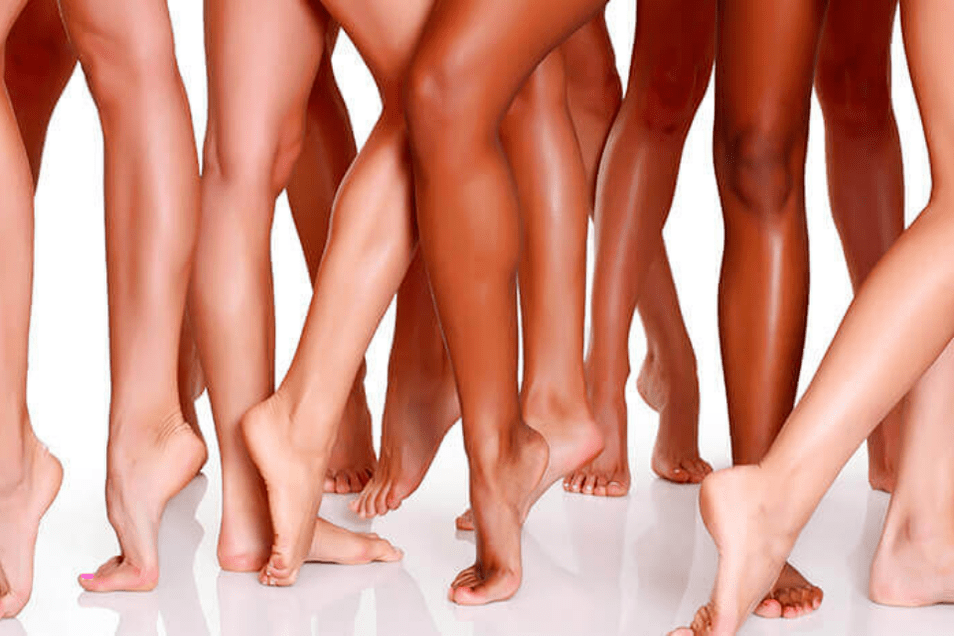
Varicose veins are a common disease characterized by an enlarged lumen of blood vessels, a malfunction of the valve apparatus, and the appearance of reverse blood flow. The pathological process can be localized in different places, so there are several types of disease:
- dilation of esophageal veins;
- rectal veins (hemorrhoids);
- small pelvic veins;
- spermatic cord veins (varicocele);
- veins of the lower extremities.
Varicose veins of the legs are considered the most common. According to some estimates, more than 30% of the population suffers from this, where the majority are women. Varicose veins on the legs are not only ugly elongated veins, but also a lot of uncomfortable sensations and discomfort. The pathological process is accompanied by severity, pain, edema and often leads to dangerous complications: thrombophlebitis, thrombosis, trophic ulcers. Many would like to know how to get rid of varicose veins forever, as this significantly impairs the quality of life. But, unfortunately, this phenomenon is irreversible and the only thing that can be achieved is to stop or slow down the development of the disease.
Causes
The causes of varicose veins are not yet clearly understood. It is understood that the disease is associated with thinning, weakening and loss of elasticity of the vascular wall, as well as with incompetence of the valves. As a result, the veins become unevenly dilated, elongated, long, complex, nodular. It is believed that a genetic predisposition plays a crucial role in the onset of the disease, namely from birth, weak vessels and defective valves.
There are a number of factors that contribute to the development of varicose veins, although they are not the causes:
- Heredity (according to experts, the risk of the disease in people whose parents suffer from it is up to 70%).
- It belongs to the female sex. This is due to hormonal changes during puberty, during pregnancy and during menopause, as well as taking hormonal contraceptives and wearing high-heeled shoes.
- Work activity accompanied by a long standing or sitting position (hairdressers, salesmen, surgeons, waiters, drivers, accountants, programmers and others).
- Old age, in which the weakening of the walls of blood vessels and the consumption of the valve apparatus is a natural phenomenon.
- Operational interventions.
- Sedentary lifestyle.
- Increased intra-abdominal pressure due to overweight, pregnancy, weight lifting (loaders, weightlifters), frequent strain with chronic constipation and cough.
Treatment methods
Varicose veins are a chronic process that begins gradually and progresses only over time. To date, it is impossible to completely defeat the disease, but it is possible to slow the development and reduce the symptoms if a complex treatment is applied, which includes:
- lifestyle change;
- diet;
- physiotherapy exercises;
- compression therapy;
- medicines (for internal use and local administration);
- Surgical intervention;
- thermal procedures;
- popular methods.
You will have to fight varicose veins throughout your life. Self-medication should not be done. It is necessary to be examined by a phlebologist or vascular surgeon, who will diagnose, determine the stage of the disease and the severity of the lesion and prescribe the appropriate treatment. The main task is to eliminate or reduce clinical manifestations, stop the progression, prevent recurrence and development of complications.
The effectiveness of the treatment will depend on the patient's compliance with all the doctor's recommendations. It is important to seek help at an early stage, when there is still no pain, but there are swellings in the evening, aggravation and fatigue of the legs, small spider veins on the skin.
Lifestyle correction
Without changing your lifestyle, it is impossible to deal effectively with varicose veins. The rules to be followed are completely banal and their non-observance is usually accompanied by unwillingness or an irresponsible attitude towards health.
- Maintaining normal body weight.
- Sharing bad habits: alcohol and smoking.
- Refusing sunbathing, visiting steam rooms and saunas, taking hot baths (including foot baths).
- Rejection from high heels (not higher than 4-5 cm).
- Dressed in a special t-shirt for stretching.
- Providing physical activity. This could be walking, swimming, physiotherapy exercises, some sports. The main thing is to exclude meetings, weightlifting, long distance running, jumping, martial arts.
- Proper nutrition. The diet should contain more fresh vegetables, fruits, herbs, cereals, seafood. It is recommended to reduce the amount of meat. It is necessary to give up smoked, fried, salty, fatty. From beverages, give preference to green tea, pure water, fruit drinks, fresh natural juices and limit coffee.
- Use every opportunity during the day to raise your legs up at an angle of about 20 degrees.
- Buy a special pillow for the feet so that they are above the level of the heart during sleep.
- Try to rinse your feet with fresh water as often as possible.
Compression therapy
Special stretch jerseys are available today in a huge variety. These are knee-length, socks, tights of different colors and densities, which are practically no different from the usual ones. They have become a good alternative to the elastic bandage, unsuitable for use and from the outside unaesthetic.
The special vest can not treat varicose veins, but improves microcirculation, reduces stress in the veins, prevents blood clots, reduces the diameter of blood vessels and increases venous blood and lymph flow. A person feels ease in walking, by evening he gets less tired, there is no swelling.
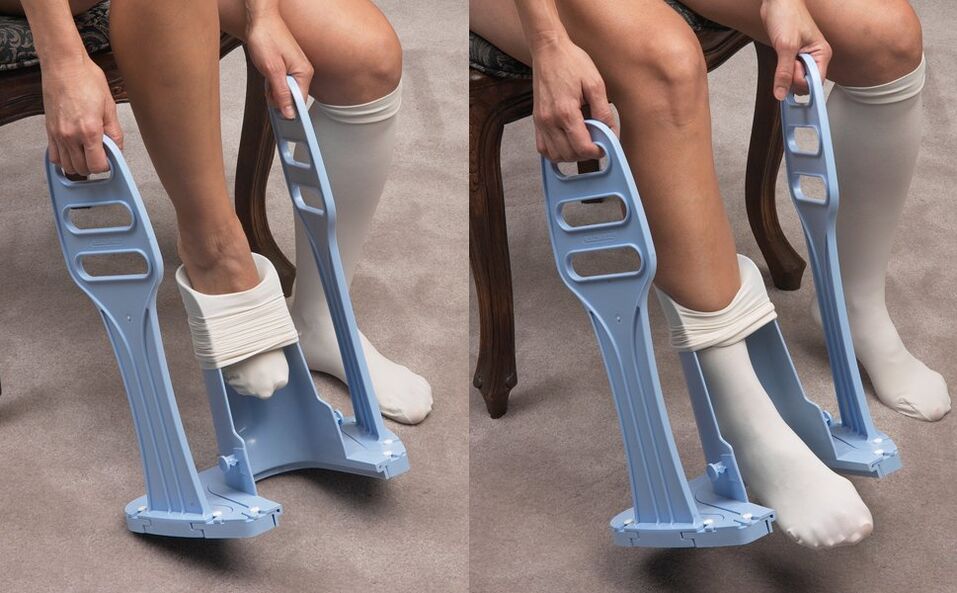
At first, without the habit of putting on socks with hand compression, it will be difficult. To make things easier for yourself, you can buy a special device.
There are four classes of medical knitwear, depending on the pressure applied. You can only wear first-class compression products, which are considered prophylactic and are intended more for healthy people. The rest should be prescribed by a doctor, depending on the diagnosis and severity of varicose veins. You should keep in mind that compression products may be contraindicated for certain diseases. Pantyhos or socks are chosen by the doctor strictly according to size, otherwise the desired effect will not be.
Drug treatment
For the treatment of varicose veins are used tablets and external agents in the form of gels, creams and ointments with different spectrum of action. They increase vascular tone, improve microcirculation, promote blood flow and prevent skin changes. Medications are designed to relieve fatigue, heaviness, discomfort, swelling, itching, cramps and pain in the legs. They are strictly individually assigned.
The main means of treating varicose veins are venotonics. They are made on the basis of horse chestnut, routine, grape leaves and are almost always well tolerated by patients. Available in the form of tablets, capsules, gels.
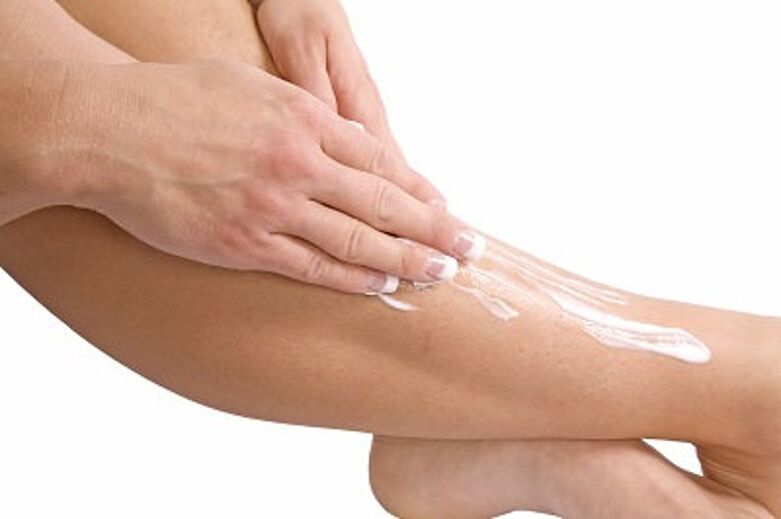
It is necessary to apply a gel or cream on varicose feet daily and rub with light movements.
Anticoagulants are used to lower blood viscosity and reduce the likelihood of thrombophlebitis. These are heparin-based ointments with cooling additives in the form of menthol, camphor, eucalyptus. In addition to thinning the blood, they prevent the development of thrombophlebitis.
For itchy skin changes, antihistamines may be prescribed. For inflammation, non-steroidal anti-inflammatory pills are prescribed.
Surgical intervention
To get rid of varicose veins, operations are performed to remove the affected part of the vessel in order to stop the discharge of blood from the superficial to the deep vein. The operation is called a phlebectomy. In its classic form, it is used less and less today in connection with the emergence of new, less traumatic ways of treating varicose veins. Such treatment, as a rule, is indicated for large diameters of veins and advanced cases of the disease.
A milder method is microflebectomy, in which a portion of a vein is removed in sections and not through an incision, but through a puncture.
Thermal methods
Radiofrequency ablation is considered the safest and least traumatic method for treating varicose veins, although there are some contraindications. The method consists in the thermal effect of microwaves, as a result of which the venous lumen is closed. Main advantages:
- outpatient treatment;
- no need for anesthesia and incisions;
- healing does not take long;
- the procedure is easily tolerated;
- can be done in summer;
- there is no bruising after treatment, swelling and pain are insignificant.
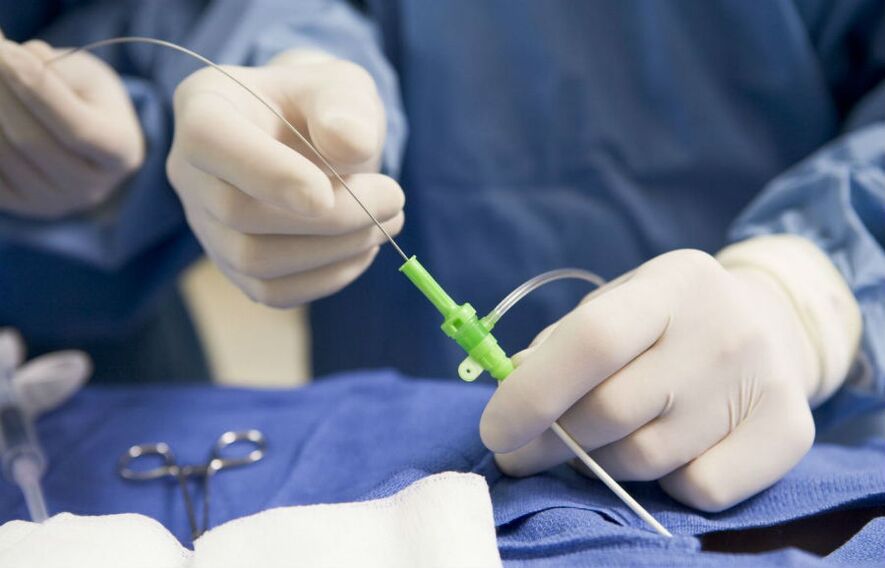
Radiofrequency ablation is a low-trauma method for treating varicose veins.
Laser coagulation is another method of treating varicose veins. During the procedure, a laser is applied to the vessel wall. Radiation leads to adhesion of the vein walls and complete closure of the lumen. It is performed on an outpatient basis under local anesthesia without incision. A catheter is inserted into the lumen of the vein, through which an LED is inserted and radiation is supplied. The procedure is with low trauma, complications are very rare.
Sclerotherapy
This non-surgical method is one of the most common. Used in small veins and as part of a complex treatment along with surgery. The bottom line is that a special drug with a sclerosing effect is injected into a vein using a thin needle. As a result, the walls of the vessel stick together, close and stop the flow of blood. The affected vein turns into a fibrous cord. The main advantages of the method:
- outpatient treatment;
- low invasiveness;
- ease of execution;
- the duration of the procedure is about 20 minutes;
- good cosmetic effect.
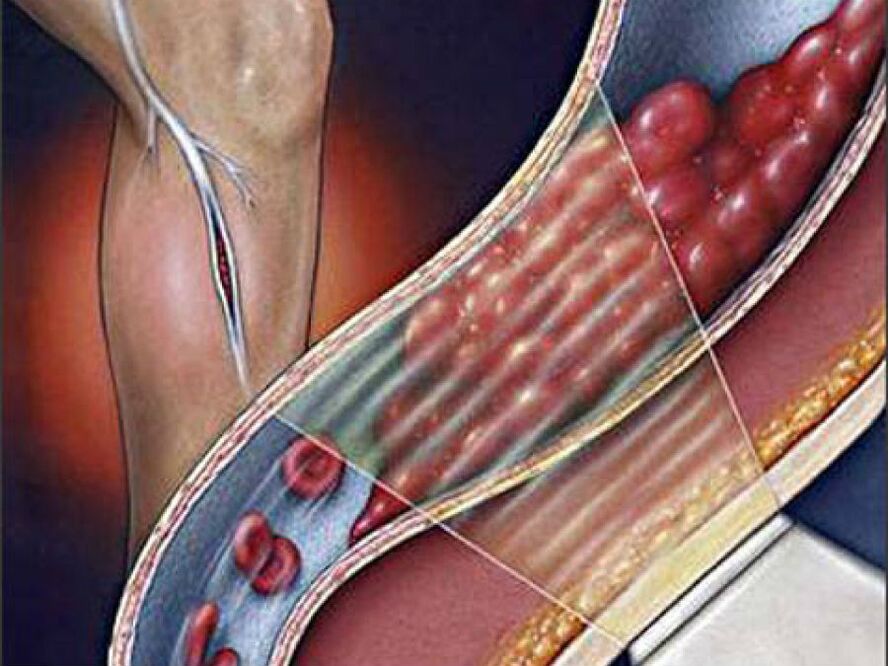
If the disease starts, a complication like deep vein thrombosis can develop.
Traditional methods
Walnut tincture
Pour the unripe grated walnuts into a glass container and pour the olive oil. Put in the sun for 40 days. Apply as needed, lubricating the affected area. Continue treatment for about four months.
Cabbage leaf
Beat a cabbage leaf, apply a layer of olive oil on one side, apply this side on the diseased area, bandage and leave for a day. Continue treatment for a month.
Horse chestnut
This is one of the most effective folk remedies. For the treatment of varicose veins, a solution is prepared from the fruits of the plant, which must be crushed, half-filled in a glass container (three liters) and filled with vodka. Remove to a dark place for a month, stirring occasionally. When it is ready, rub it on the sore spots overnight. Alcoholic tincture of chestnut for external and internal use with varicose veins can be purchased at the pharmacy.
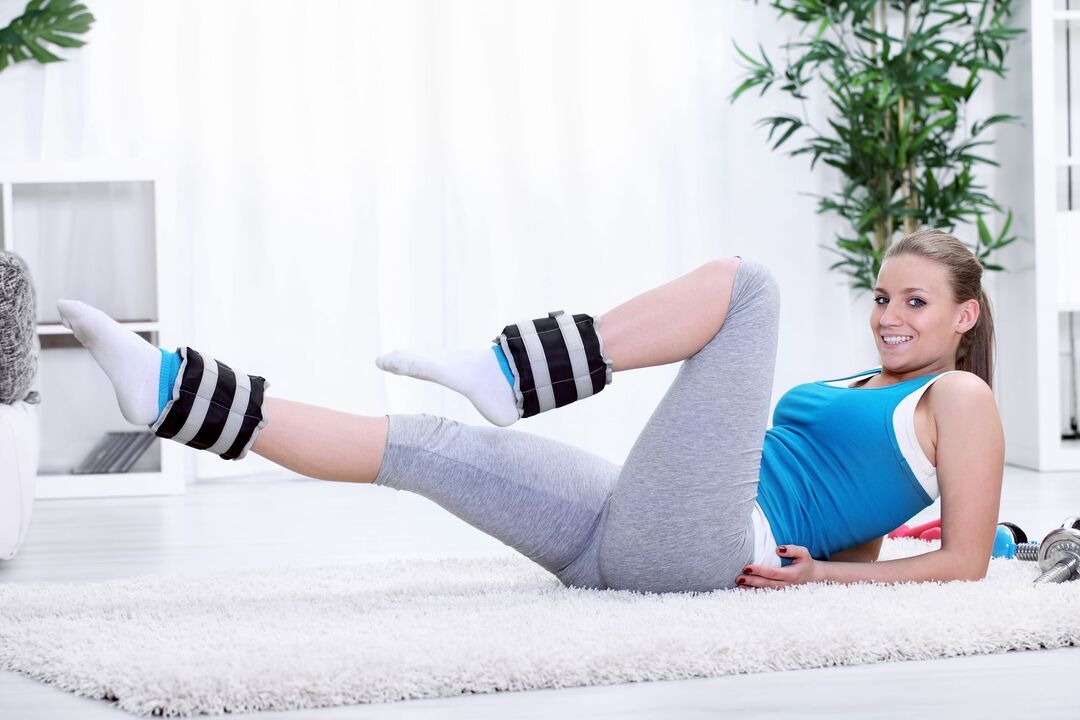
Physiotherapy is an integral part of the complex treatment for varicose veins.
exercise
When varicose veins appear, the question may arise as to whether it is possible to engage in physical education and sports and which exercises are beneficial. Most doctors agree that physical activity in such a disease is very important, as the dynamics are beneficial to the veins and static is detrimental. But it is equally important to consult with your doctor about what kind of sports you can do and what kind of loads will be optimal. In addition, the patient may be shown special therapeutic exercises, which are performed directly at a medical institution. At home you can also do simple but effective exercises, which with regular exercises will help reduce the symptoms of varicose veins.
- Lie on your back, place pillows under your feet so that they rise at an angle of 20 degrees. Close your eyes, relax completely, take a deep breath.
- In the supine position, lift your legs vertically and rotate your legs alternately in and out.
- Lie on your back and move your legs like riding a bicycle.
- Lying on your back, lift your legs and cross them (scissors).
- Stand up straight, lower your arms, legs together. Slowly get up on your toes, then descend just as slowly.
- Walk in place, do not tear socks off the floor.
- Sitting in a chair, bend your ankles towards yourself and away from you, then bend your toes in the same way.
- Pour over the feet with an elastic stream of water (alternately cold and warm).
Conclusion
Varicose veins are an irreversible process, but should be treated without fail, especially since there are plenty of modern methods to be used in combination. Without treatment, there is a high risk of developing complications such as chronic venous insufficiency, phlebitis, thrombophlebitis, thrombosis, trophic ulcers, and even such a dangerous condition that can result in death, such as pulmonary embolism.























